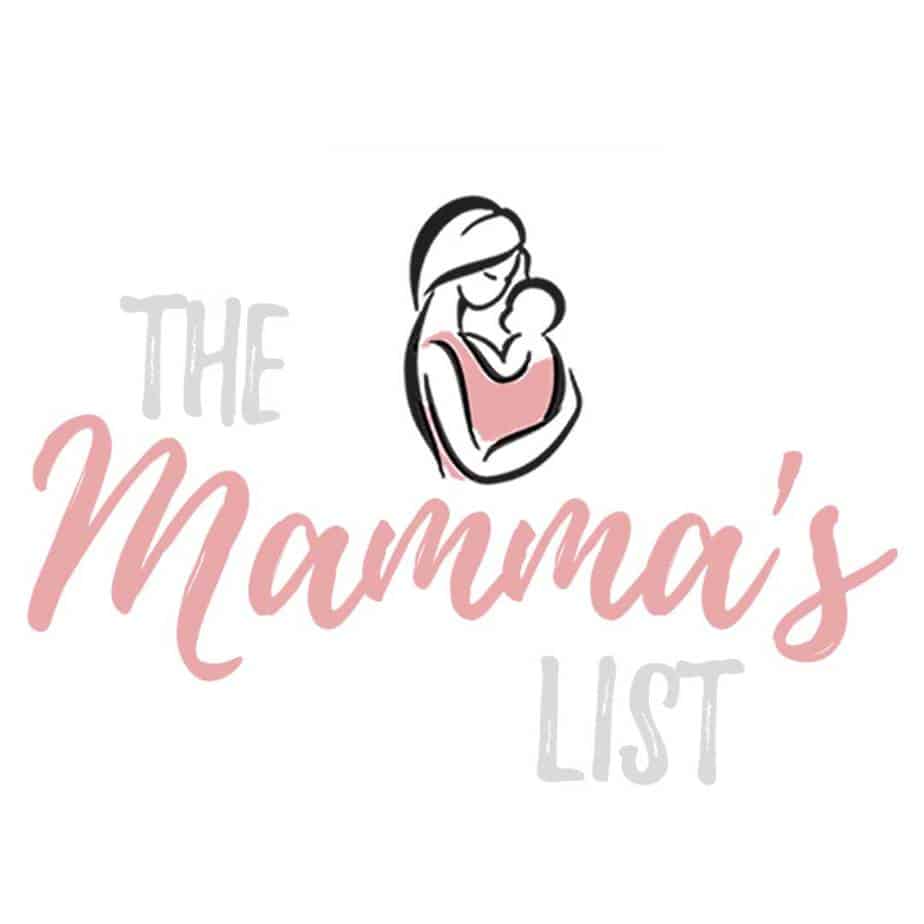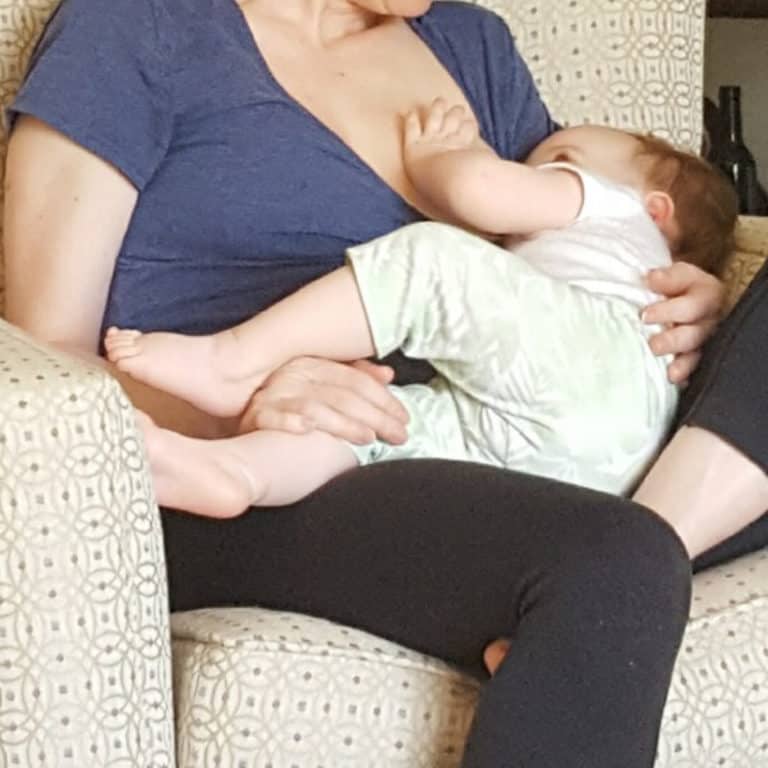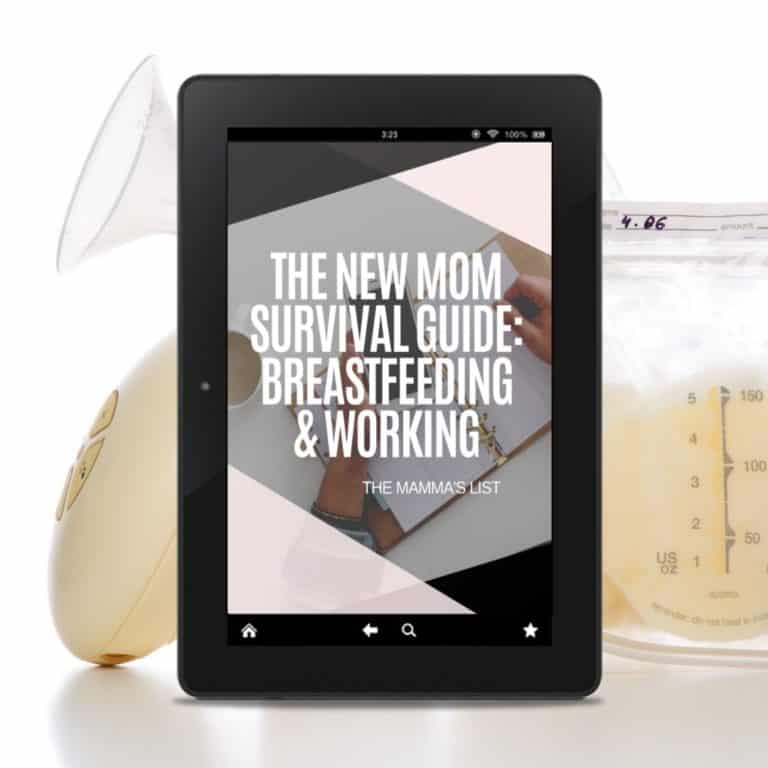The best breastfeeding tips all new moms need
If you’re reading this post you’re either a mom-to-be who is planning her breastfeeding journey or more likely, you’re a new mom struggling in the trenches of early breastfeeding desperately looking for answers, help, a lifeline, (a blog post) or anything to make this phase easier. If you need breastfeeding tips NOW you’re in the right place. Here are the quick breastfeeding hacks for beginners I put together as a soon-to-be second-time mom.
This post probably contains affiliate links. That means if you buy something using one of my links I may receive a small commission – at no additional cost to you! How cool is that? It’s kind of boring, but feel free to read my full disclosure if you want more info
First things first, you want the right gear. Breastfeeding is hard enough. You’ll want everything you can to make it easier. I’m not going to go into detail on the best nursing pillows or nipple cream here, but you can check out the article below to ensure you’re stocked.
Related: The top 12 Breastfeeding Products to Survive the First Year
Ok, once you have the gear, here are some quick tips to success, as well as some additional resources that may really help you out on the breastfeeding journey.
Breastfeeding tip 1: Learn the mechanics of breastfeeding and lactation
I’m not a lactation consultant so please continue to seek out additional information on this one, but I do know enough to explain the general mechanics of breastfeeding.
After birth, your hormones shift and the short story is that pregnancy hormones shift to milk production hormones. This is why even moms who choose not to breastfeed have their milk come in. If you’ve chosen not to breastfeed, it’s unlikely that you’re reading this, but if you are, you just have to hang in there and wait for those puppies to dry up. Do NOT stimulate the breasts or pump or you’ll only send your body signals that you want more milk.
Milk production and lactation are then stimulated by your baby, so doing lots of skin to skin and offering the breast for extra stimulation from your little one will help your milk come in and boost your supply.
During the first 2-4 weeks postpartum, try to nurse at least 12 times a day. Please don’t try to put yourself on an immediate schedule if you want to produce enough for your newborn.
How breastfeeding works
Your body produces milk on a supply and demand system, which means, every time you feed your baby a bottle or supplement, it sends a signal to your body that you don’t need that milk. If you’re looking to exclusively breastfeed, this can be a huge tank to your supply. Additionally, introducing a bottle before 2-4 weeks can also create nipple confusion. If you’re really trying to go the distance with breastfeeding, offering the breast frequently and not supplementing is the way to go.
I also never gave my daughter a bottle without pumping. If I wanted some extra sleep, I’d pump before I went to bed just so I didn’t “miss” a session.
**Of course, I know the above paragraph won’t resonate with everyone, and you have to do what feels right for you. There are also lots of other reasons you may need to supplement or introduce a bottle early. However, the breastfeeding system of your body knows when you don’t need milk, and supply will reduce accordingly. I’m just offering the best advice I can for someone who wants to exclusively breastfeed for as long as possible. If you are supplementing and using bottles early, it doesn’t mean you can’t have a long and healthy breastfeeding relationship as well.
Breastfeeding Tips and Resources:
Kelly Mom is an AWESOME breastfeeding resource, and she is actually a lactation consultant so she knows her stuff. This article explains the milk production process in much more detail, but the premise is the same. Emptying your breasts more frequently brings in more milk. Whether you accomplish this with nursing or pumping will be up to you and your situation.
The Ultimate Breastfeeding Class is an online breastfeeding course that takes you from the mechanics behind breastfeeding through the perfect latch and boosting supply. It’s a great way to learn to breastfeed from home, and it’s only $19. Click the link to learn more about the class to see if it’s right for you.
If you already know you want to learn more, and the $19 price tag feels like a steal, click the banner below.

Breastfeeding tip 2: Work on your latch
Alright, so part of the problem with a new mom learning to breastfeed is that you’re learning and your baby is also learning. Two learners can be pretty inefficient, and you could also be giving your baby bad habits.
The main cause of breastfeeding pain is a poor latch. This can be due to a baby that doesn’t open wide, or due to a lip or tongue tie. It can also be because your baby just needs to practice. If you don’t get a good latch the first time, take the baby off the breast and try again. This article has awesome leaflets you can download to show you exactly how to position and latch your baby.
Trust me, from a mom who had bruised nipples for eight weeks, it’s easier to take the baby off and start over than to just let the nursing happen incorrectly. Once you teach your baby bad habits it’s a lot harder to break them.
Don’t forget to grab your breastfeeding schedule cheat sheet from newborn to one year by entering your email below. You’ll also get access to the resource library with lots of other useful information on breastfeeding and that mom/baby life.
Breastfeeding tip 3: Begin pumping to build a freezer stash
Finally, once you’ve got the latch down and the (constant) nursing under control, you can start thinking about boosting your freezer stash in case you want a little separation from baby. Be very careful about “over” pumping in the newborn phase. Just as you can decrease your supply with too little stimulation or supplementing, you can also create an oversupply if you pump too often.
I started pumping once a day when my daughter was a few weeks old. I always pumped in the morning after I fed her, so I knew that I wasn’t taking milk she needed immediately. At first, I just got a few ounces, but as my supply grew and I went back to work I’d sometimes get 8 -10 oz. during this morning pump.
These extra ounces are what got us through the first year. When I was pumping at work or when I had to pump for three bottles per day instead of two, I almost never made enough to use fresh milk the entire day. For me, starting early and pumping every time she had a bottle was what made all the difference in the world. I needed those early morning ounces, so once I went back to work, I pumped 3-4x per day to give her 2-4 bottles.
Related: Breastfeeding & Pumping Schedules for the first year
All of the above seems great, but as any breastfeeding mom will tell you, the journey isn’t always a straight line or down a smooth path. Even moms who have had extremely successful breastfeeding relationships will talk about the bumps along the way. I’d be remiss if I didn’t include a section on troubleshooting because one of these issues is what likely brought you to this page.
Breastfeeding Troubleshooting:
Plugged ducts
In fact, suck. These feel like hard little balls or knots in your breast and may even be hot to the touch. It’s important to deal with plugged ducts quickly so that they don’t turn into mastitis. The best way to do this is with frequent nursing, massage, and compresses. Your baby may also actually massage the breast with their hand occasionally, which can help as well. I’m not going to lie, nursing through a plugged duct can be painful. Massage can be painful. Hot compresses may actually feel better at the time. Doing anything and everything you can to get the plugged duct clear quickly is critical. If your breast turns red or becomes hot to the touch and you get a fever, call your doc right away. You probably have mastitis and may need an antibiotic.
Don’t ignore massive pain
As I mentioned before, breastfeeding pain is most likely due to a poor latch. Although most moms are uncomfortable for a while, you shouldn’t ignore breast or nipple pain. This can be caused by multiple things. Seek help from a lactation consultant and get baby checked for a tongue or lip tie.
If you have pain on one side, try skipping a session to let the nipple “rest.” I actually went an entire day without nursing on one side since I was in so much pain. If you’re going to do this in the newborn phase, be sure to pump so you don’t get a plugged duct. You can put the pump on the gentlest setting to help rest your breast.
Here’s a great article with tips for a good latch: Five Secrets to the Perfect Latch
Engorgement
This is also not fun and happens a lot when your baby is a newborn. Luckily there are lots of things you can do for this.
- Nurse. Let baby clear some of that milk for you!
- Heat/Ice packs: these puppies help with the pain of engorgement during the early days.
- Pump a little or hand express. If you’re engorged you don’t want to create an oversupply. If you pump just do it for a couple of minutes to take the edge off.
- Take a shower. A lot of women will let down in the shower in the warm water. You won’t fully empty your breasts but you should get some relief.
Baby isn’t gaining weight
This is a tough one. I wish there was a breastfeeding hack that somehow put measuring cups on your boobs. Unfortunately, there isn’t.
If the problem is serious you can get a scale and weigh your baby before and after each feed. This is what they’ll do at the pediatrician to see how much milk the baby is getting at each feeding.
A problem could be that milk isn’t transferring properly and your baby needs more nutrition. This is something you should discuss with your baby’s pediatrician. If you’re offering more nursing sessions and waking baby every two hours to nurse, there isn’t a lot else to do on your own.
The good news is, you aren’t in this alone. Many pediatricians also have a lactation consultant on staff, and La Leche League has support groups all over the country to help. They also have online resources you can get from your couch.
Breastfeeding Tip #4: Nail Breastfeeding and Working
Ok? Ready for the advanced section? If you’re breastfeeding and planning to go back to work, you’re going to want a plan. Check out how I planned my re-entry to work and continued pumping for 12 months. I continued breastfeeding for 19 months after my first daughter was born.
Learn everything you need to know to go back to work and continue breastfeeding!
If you want to learn to breastfeed and really set yourself up for success when you go back to work, check out the awesome Breastfeeding & Working Ebook I put together on breastfeeding and working success.
We’ll tackle questions like:
- How to set up the conversation about breastfeeding at work
- How to prepare to be successful breastfeeding when you return to work
- Getting your baby ready for bottle-feeding
- Your rights as a breastfeeding mom
You’ll also learn how to:
- Set up your day so you get more done
- Prioritize and set yourself up for success
- Outline expectations and your schedule with your boss
- Crush it as a boss mamma when you’re back at work
Click the banner below for more information!

I hope the above breastfeeding tips and tricks helped to prepare you for the journey or as you’ve entered the world of a breastfeeding mamma. If you found this post helpful, please share it with others by pinning for later!










